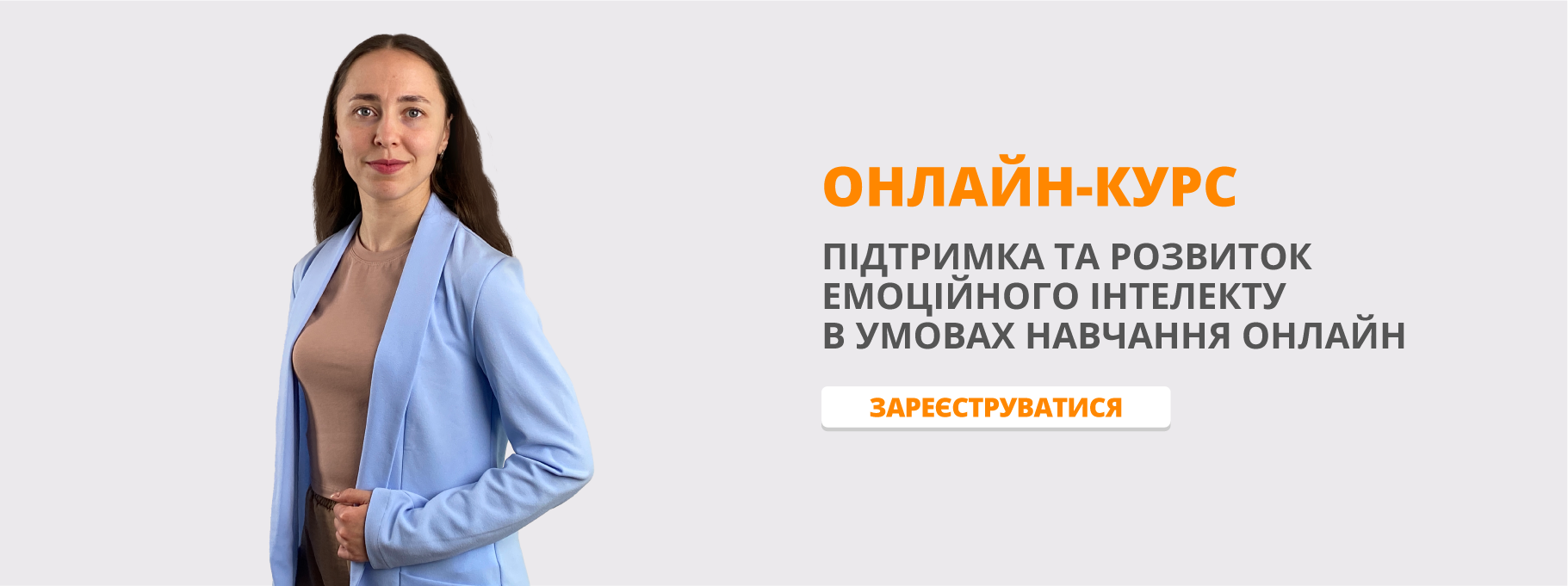Розробка фрагменту уроку в 9 класі на тему «Екологічні проблеми навколишнього середовища» з використанням методу CLIL
Розробка фрагменту уроку в 9 класі на тему «Екологічні проблеми навколишнього середовища» з використанням методу CLIL , ціль якого розширити міжкультурні та між предметні знання учнів, ознайомити та закріпити вивчений матеріал з інших предметів,а саме — географії та екології, розвити навики спілкування в природних умовах.
Тема уроку: «Екологічні проблеми навколишнього середовища».
Автор: Возняк Г.О.
Посада: вчитель англійської мови
Цілі уроку:
Освітня: ознайомити та закріпити знання учнів про екологічні проблеми навколишнього середовища та їх вирішення, вдосконалювати мовну компетенцію та тренувати усі мовні навики.
Розвивальна: розвивати критичне мислення, розвивати навики роботи у команді та в парах. розвивати творчий потенціал учнів
Виховна: виховувати любов до природи та екологічну свідомість, розширити міжкультурні та між предметні знання учнів, підвищити інтерес до використання англійської мови в різних сферах життя,
Тип уроку: урок засвоєння нових знань. Міні-конференція
Обладнання: комп’ютер, екран, проектор, картки, презентація, відео до пісні Майкла Джексона « Earth song» підручник А. Несвіт 9 клас
Етапи уроку:
- Організаційний момент (1 хв.)
- Введення в тему уроку (2хв.)
- Warming up activities (3хв)
- The main part of the lesson (2 хв.)
- Listening to the song (4хв.)
- Memory game ( 5хв.)
- Pop-corn speaking (3 хв.)
- Робота в командах «Розумні Сортирувальники» (3хв.)
- Рефлексія—складання пам’ятки ( 5 хв. )
1. Організаційний момент. Вчитель створює позитивний настрій на урок (знімає напругу, создає ситуацію успіху).
Учні виконують вправу – побажання на урок. Усі тримаються за руки та вимовляють посміхаючись « We are united—we are the best”
- Introduction into the topic. Введення в іншомовну атмосферу
How do you understand the proverb?
The Earth does not belong to man, man belongs to the Earth
Вчитель читає прислів’я і діти висловлюють свої думки.
T: Dear pupils, as you’ve understood the theme of our lesson will be connected with nature. The motto of our lesson is “No matter what colour your skin is, what language we speak, we have one thing in common: all of us are people of the same planet with the same worries, troubles and future”. Вчитель повідомляє тему та девіз уроку .Today we’re going to discuss the main environmental problems endangering us in English and use our knowledges from Geography --try to find their solutions.
- Warming up activities-- Розминка
T: We live in a magic world. The world is full of wonderful things. It is our nature. So, let’s discuss the problem: “The role of nature in our life”. What is nature?
Вчитель питає дітей — Що таке природа і її роль в нашому житті? Далі приклади відповідей дітей.
P1: Nature is our best and kindest friend.
P2: Nature gives us life. We are children of nature.
P3: Nature provides us with mineral resources, rivers, forests, fields.
P4: It teaches us to be kind and clever, attentive and creative, to understand the world around us.
P5: Nature presents us with beautiful songs of the woods, of the wind, of the birds.
- The main part of the lesson. Brainstorm
Головна частина уроку – Мозкова атака. Учні заповнюють схему — Що таке довкілля та з чого воно складається? Учням роздаються картки для заповнення пропусків. Let’s start. Today you will be scientists who investigate (research) ecological problems and work in two- three teams.
T: What is environment? Think about it and let’s make the mind map. What associates with the word “environment”? Give 1 point for winners and give stickers.
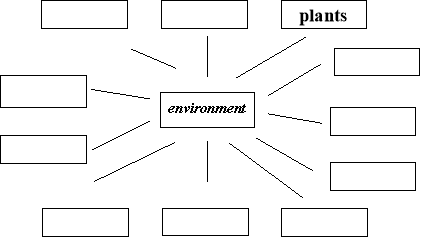
- Listening to the song
Our scientists should watch a lot of different videos, remember this information and use it in their researches.
Учні дивляться відео неповністю (1-2 хв. ) на пісню Майкла Джексона про Землю та дають відповіді на запитання: Про що ця пісня? Назвить 9 видів тварин, яких ви побачили. Яки з них вимираючі? Яка головна думка цієї пісні? Та які екологічні проблеми ви побачили? яке може бути продовження відео? – думки дітей
T: So, you see that ecological situation in the whole world is very serious. What are the most important ecological problems of our planet? Listen to the song, watch the clip by M. Jackson and think about the main idea of it.
T: What is this song about? Give 2 points for team which have a lot of correct answers and give stickers.
Ps: The song is about:
Pollution of air by plants and factories.
Destruction of forests.
Littering.
Dirty rivers, seas, oceans.
The contamination of the soil.
Heating and greenhouse effect.
Extinction of animals and plants.
T: Name 9 species of animals you have seen.
Ps: Monkeys, toucans, elephants, zebras, giraffes, dolphins, seals, antelopes, whales.
T: Which of them are endangered?
Ps: Whales, dolphins, some species of antelopes, elephants.
T: What is the main idea of the song?
P1: People should care about the environment, stop killing animals, destroying forests, polluting air water and land.
P2: Humans should live in harmony with nature and save this beautiful world.
P3: It’s a call to all the people of the world to be united and save the earth.
- Memory game
T: Of course, Our scientists should have a good memory—to analyze facts, do some experiments and write scientific projects. Children have a look at the pictures on the wall. What do they tell you about? And to be precise? What kinds of littering ? Give 2 points for team which have a lot of correct answers and give stickers.
Учні продовжують працювати в командах. Протягом 10-15 секунд учні слід запам’ятати інформацію, зображену на фото. Потім вони по командам описують ці фото— який вид сміття і як це може виникти.
Trash (Littering) Water poluttions, Air poluttion, Smog, soil pollution
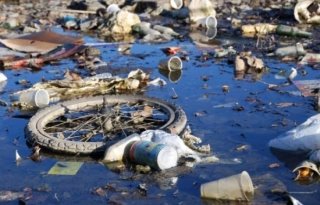
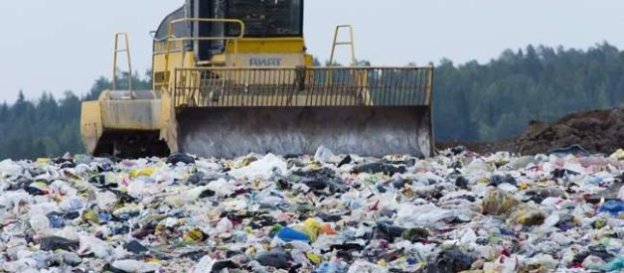
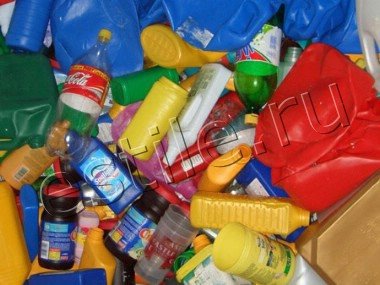
Tell as much as you can about this problem.
Приклади відповідей учнів.
- In many places the water has become polluted. Rivers and lakes are polluted by garbage or by poisonous chemicals which are dumped right into them.
- Most of our garbage is just buried. Now we are ,making so much garbage that in many places there is not enough room to bury it all.
The hot problem in today’s world is the environment. There is a lot of pollution and many animals and plants are in danger. We can all help our planet.
- Today the air is so polluted that it is not always safe to breathe. Many cities around the world have air filled with a pollution called «smog». This is so strong in some places that the air which should be blue,actually looks brown.
- In many places the water has become polluted. Rivers and lakes are polluted by garbage or by poisonous chemicals which are dumped right into them.
- Underground water can be polluted by gasoline or other harmful liquids that seep into the ground.
- Acid rains are extremely harmful to plants,rivers and lakes and the creatures that live in them. In some places they kill forests. And they pollute the water for drinking.
- Most of our garbage is just buried. Now we are ,making so much garbage that in many places there is not enough room to bury it all.
The hot problem in today’s world is the environment. There is a lot of pollution and many animals and plants are in danger. We can all help our planet.
- Яке з цих видів забруднень найактуальніше та нагальне для нашого міста? (сміття + приклади вчителя та учнів)
Now, my dear scientists, let’s discuss what is the most topical (important) problem in our city? Give 2 points for team which have a lot of correct answers and give stickers. We use pop-corn—let’s revise: when you answered – you can choose who will be next from opposite| competitor team.
«Попкорн спикинг»--коли відповівший учень, обирає того, хто буде наступним—назвавши його імя та слово попкорн.
Pop-corn speaking
- Have you ever thought what happened with rubbish when you throw it away?
- How long does the litter stay in the ground? (give examples)
- What should people do to make our city cleaner and live without litter?
- What is the most typical ecological problem in Kryvyi Rih? Why?
- Say what types of litter can you see.
- Why do these containers have such colors?
- What colour can you add and what kind of rubbish?
- What character qualities (features) should people have who keeps and takes care about nature?
- «Розумні Сортирувальники»
Have you ever thought what happened with rubbish when you throw it away? How long do the litter stay in the ground? For example, a bottle of glass can stay into the ground for million years. What can we do with litter? Let’s look and what types of litter do you see? Give 2 points for team which have a lot of correct answers and give stickers.
It’s better recycle litter and make our planet, our city cleaner. In Europe, US and other countries people know how to do this—they sort rubbish to the special containers. For this our scientists you should practice—do a little experiment: sort names of litter to correct container.
Ви коли-небудь замислювались над тим, що трапиться зі сміттям, яке ви викидаєте? Та скільки років воно може знаходитися в землі? (приклад банки зі склом)
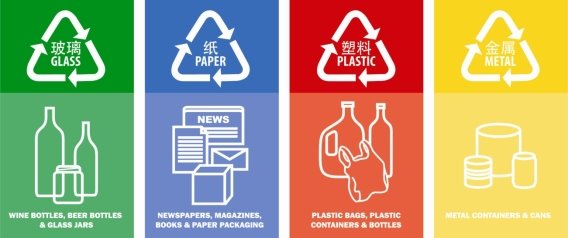
Спочатку діти ознайомлюються з чотирма різнокольоровими контейнерами для сміття. Вчитель опитує учнів – чи знають вони про ці кольори та для якого виду сміття вони розраховані. Потім дітям вчитель роздає картки з назвами різних речей і учні протягом хвилини з’єднують назви з кольором контейнера. Після виконання вчитель перевіряє правильність завдання.
- Feedback (group work)
У кінці уроку, для підведення підсумків, учням роздаюються різнокольорові аркуші паперу, де вони пишуть пам’ятку (mind-map) Перша команда ,що потрібно робити для збереження краси та чистоти міста; Друга команда—що, не потрібно робити (заборонити) Або надати право вибирати і зробити щось своє креативне .
T: The Earth is a big place with big problems. You can’t solve them alone, but there are things you can do to help. An old Chinese proverb says: “A journey of thousand miles must begin with a single step”. The way it is. If you do something to help and many others do the same, all the small steps can add up to a lot of forward movements. What can you personally do to protect the environment?
During 3-5 minutes draw or write your small steps—mind-maps, top tips to save our city and our planet.
Students’ solutions: Приклади рішень.
- Don’t litter with paper, cans and bottles.
- To make streets cleaner pick up and throw litter into the rubbish containers.
- Clean rubbish from lakes, ponds and rivers.
- Recycle used materials such us metal, bottles and paper.
- Have showers, not baths. Showers use less water.
- Save energy: use less electricity and gas. Turn off the lights when you leave a room.
- Don’t break trees, leave wild flowers to others to enjoy.
- To save forest don’t leave the fire.
- Plant more trees and flowers.
- Place bird houses in the yards; don’t destroy nests.
- Feed birds in winter and help them to survive in the cold.
- Walk or use a bicycle instead of going by car.
Т: But remember my friends! The most dangerous pollution is the pollution of the soul. Keep your souls clean! Don’t pollute them with anger, envy or selfishness and the world will be better place to live!


про публікацію авторської розробки
Додати розробку
